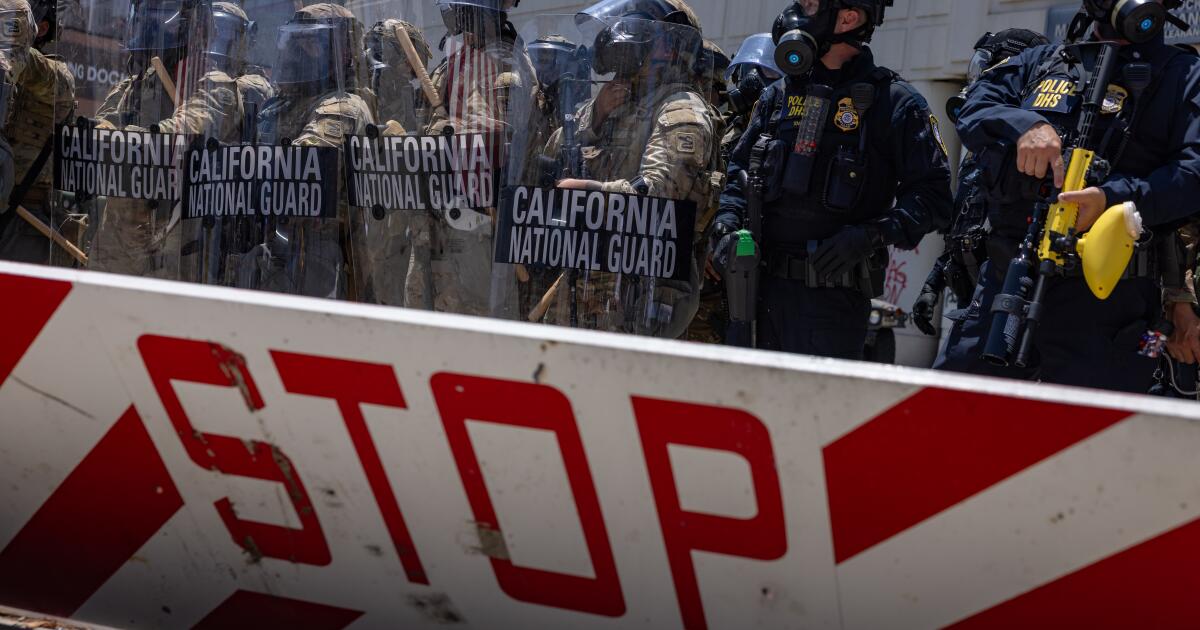When four Los Angeles police officers were acquitted in the beating of Rodney King, President George H.W. Bush expressed the shock and horror many Americans felt.
“What you saw and what I saw on the TV video was revolting,” Bush said in a nationally televised speech from the Oval Office. “I felt anger. I felt pain. I thought: How can I explain this to my grandchildren?”
Bush spoke after dispatching National Guard troops to Los Angeles following three days of civil unrest sparked by the not-guilty verdicts — some of the worst domestic violence the country had ever seen. He acted at the request of California Gov. Pete Wilson and Los Angeles Mayor Tom Bradley.
Bush offered no apologies. To the contrary, he said “there can be no excuse … for the murder, arson, theft, and vandalism that have terrorized the law-abiding citizens of Los Angeles.”
At the same time, however, Bush sought to address some of the underlying issues — the racist history of the LAPD, chief among them — that festered for decades before exploding into molten rage. And he promised to use Washington’s power to pursue justice, which eventually led to a federal trial of the officers who battered King.
That is, historically, what presidents have done: Facing volatile circumstances, confronting crises, they summon the powers of their office to explain, to ameliorate, to reassure and above all, to try to calm the situation.
Anger and aggrievement are the twin engines that power the president’s glowering soul. He used the pretense of some relatively modest, scattered protests to seize control of the National Guard and unilaterally dispatch troops to Los Angeles — launching an assault on the Constitution and the limits of presidential power yet again.
He demonstrated anew his eagerness to divide and conquer and, with swagger, put the bully into bully pulpit.
“He does not see that calming role as being very integral to what he does,” said Julian Zelizer, a Princeton historian and author of a book on Trump’s first term. “He is definitely willing to provoke conflict and to fuel division rather than to move in the opposite way. … Instead of calming a situation, it’s the opposite. It’s ramping up a situation.”
Before we continue, let’s be clear. As Bush said, there’s no excuse for arson, theft or vandalism.
Violent protest doesn’t bring about justice. It only begets more violence. It justifies crackdowns like the one Trump has so eagerly employed — playing into the president’s hands, as Gov. Gavin Newsom put it.
Moreover, waving the flag of a foreign country isn’t prideful, or politically smart in the least. Rightly or wrongly, it’s inciteful, serving only to distract from and hurt the pro-migrant cause the flag-wavers profess to champion.
And, to be clear, there are some people who use protests like the ones against Trump’s immigration raids as a cover and excuse to pursue an extraneous agenda of violence and anarchy. They’re doing more than just physical damage.
None of which, however, justifies the conduct of a president who, when faced with flames, comes running with gasoline. Instead of a steady hand or the consoler-in-chief, we have a political arsonist residing in the White House.
The fact Trump dispatched troops to tamp down protests in Los Angeles, the biggest blue megalopolis in the nation’s biggest blue state, cannot be ignored.
“The president loves to take symbolic acts,” said George Edwards, a presidential scholar at Texas A&M University, in this instance targeting California and a long-time nemesis, Gov. Gavin Newsom, and using immigration — long an issue at the heart of his political agenda — as his sword and shield.
“Aside from an incidental goal of keeping peace,” Edwars said,. “I think that’s important in his mind.”
You can practically see Trump salivate.
And there is something else worth noting, as the president calls in the Guard and positions himself as the savior of law-and-order.
“They spit, we hit!’” Trump blustered, warning demonstrators of the consequences they would face if they assaulted police and troops in such a manner.
This from a president who unconditionally pardoned 1,500 criminals convicted in the Jan. 6 attack on the U.S. Capitol and its peace officers — one of whom attacked a policeman by plunging a stun gun multiple times into his neck.
“You tase, we’re unfazed!” — is that how it’s going to be, so long as the violence is conducted on Trump’s behalf?
In the decade since his descent down a gilded escalator — and emergence as the most dominant and consequential political figure of the 21st century — Trump has proven himself a peerless master of distraction and deflection. And so it is again.
But in looking out for his own interests, and conflating policy with personal grudges, Trump has abdicated one of the responsibilities of a president: to dampen unruly passions, to quell violence and, as the preamble of the Constitution states, to “insure domestic tranquility.”
“Any moment like this is very dangerous,” Zelizer said, “because the more force that that is there, the more potential there is for something bad to happen.”
We can hope for the best. But this will probably not end well.
